Writing is one of the skills we try to practise a lot with our students. Especially teenage students, as they aim for exams and developing general ability to express their thoughts clearly in a written form. However, writing classes may sometimes be a struggle both for teens and their teacher. Some learners lack motivation when they see a bit artificial coursebook tasks. Others feel restricted by the vocabulary and grammar which they are currently studying.
A freer and funnier way to practise is keeping a class journal. Journal writing can be used to overcome language and mental blocks and to encourage writing for communicative purposes.
A journal is similar to a diary. However, it is not that personal and supposed to be read by other people. Most often, it’s a teacher who adds some comments to a student’s texts, but there are many forms and ways of using class journals with teenagers. Two main ways of journal writing are the following:
Personal
Students have their own notebooks for journal writing. They use them to create personalised entries. At the beginning of the course, you can ask them to write down everything they think you, as a teacher, should know about them. Then you may proceed with various ideas. Teens can write a story with the title given, do freewriting when they listen to some piece of music and write about everything that comes to their mind; or just reflect on their learning during the course.
In this case, they give their notebooks to the teacher only. The teacher checks and responds, other groupmates are not involved. This is a great way of knowing your teens better, especially the ones who don’t like getting feedback in the presence of their peers. Bear in mind, though, that it’s quite time-consuming and requires a lot of teacher’s effort and participation. Probably, this kind of journal writing is better for mini-groups and individual students.
But what to do if you have 12 teenage students sitting in your class and not that much time for writing individualised comments on extra writing? Check the next option!
Collaborative
In this case, you buy a single notebook for the whole group. This notebook will contain all the stories. Students can take turns bringing it home if they want to write a longer piece. They can pass the notebook to each other if the aim is to write some list or shorter pieces. As all the students are involved, they are able to read each other’s texts. Such an option is ideal for creative writing and storytelling, but less suitable for personal things. Call it a group blog, but on paper, and you won’t be wrong.
Personal writing seems more traditional and obvious. But if you opt for collaborative journal writing, where to start?
First, introduce the idea and let students discuss what to write about. Here the choice is all theirs: ‘A thing that surprised me this week’ with the comment section, an ‘Art and Music Herald’ if they’re into it, or just a comic book about some character. My teens once opted for the last one. This way, Kevin was born who became our loyal friend in the arduous journey of learning English.
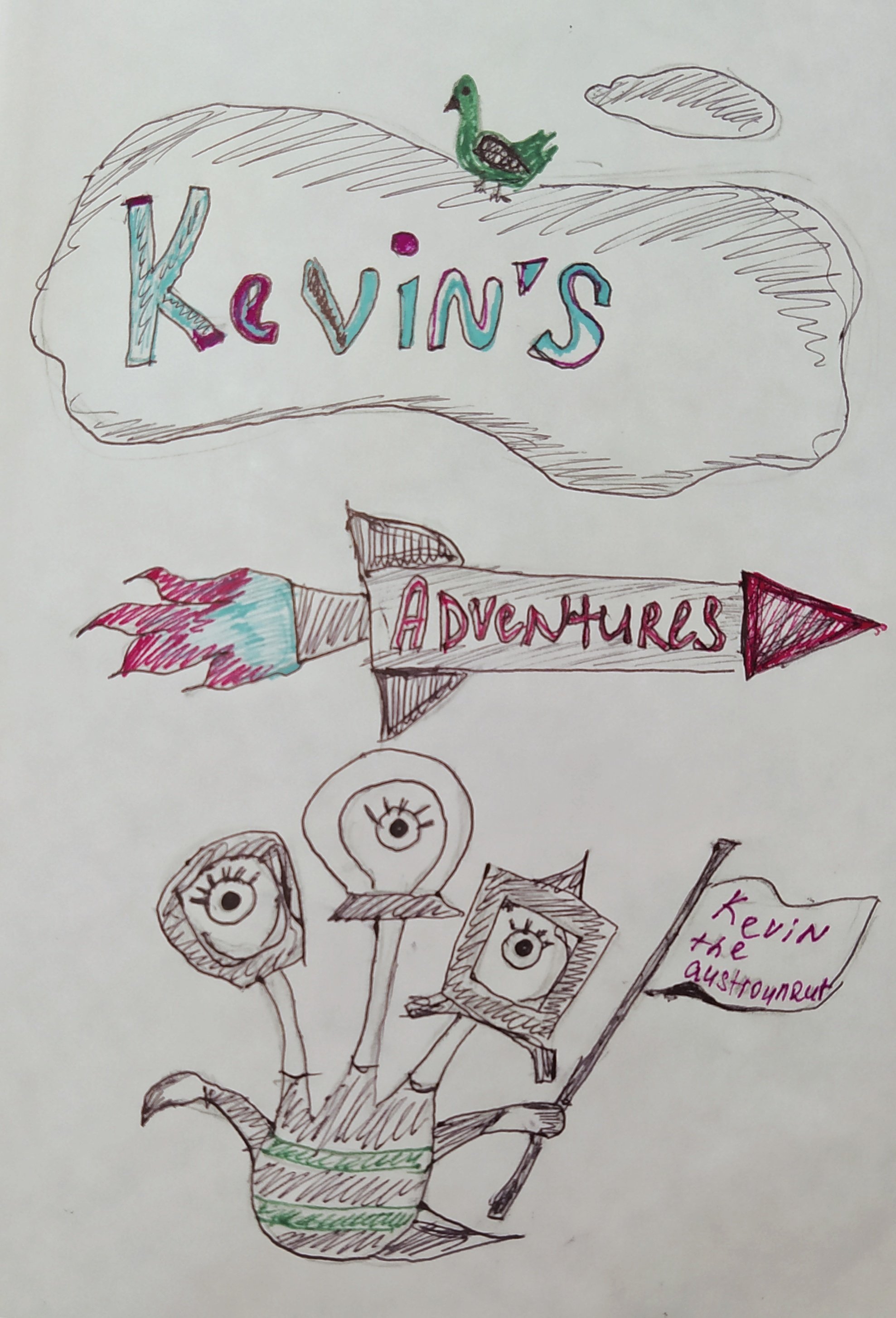
The next step is to talk about the routines. Agree on the rules of turn-taking and more or less equal participation. Discuss the teacher’s role: are you going to write in the journal at times? Will there be any corrections? Talking about the corrections, there is something to take into account. Sometimes you can ask your students to use target grammar or vocabulary in their texts. In this case, further discussion and corrections might be worth it.
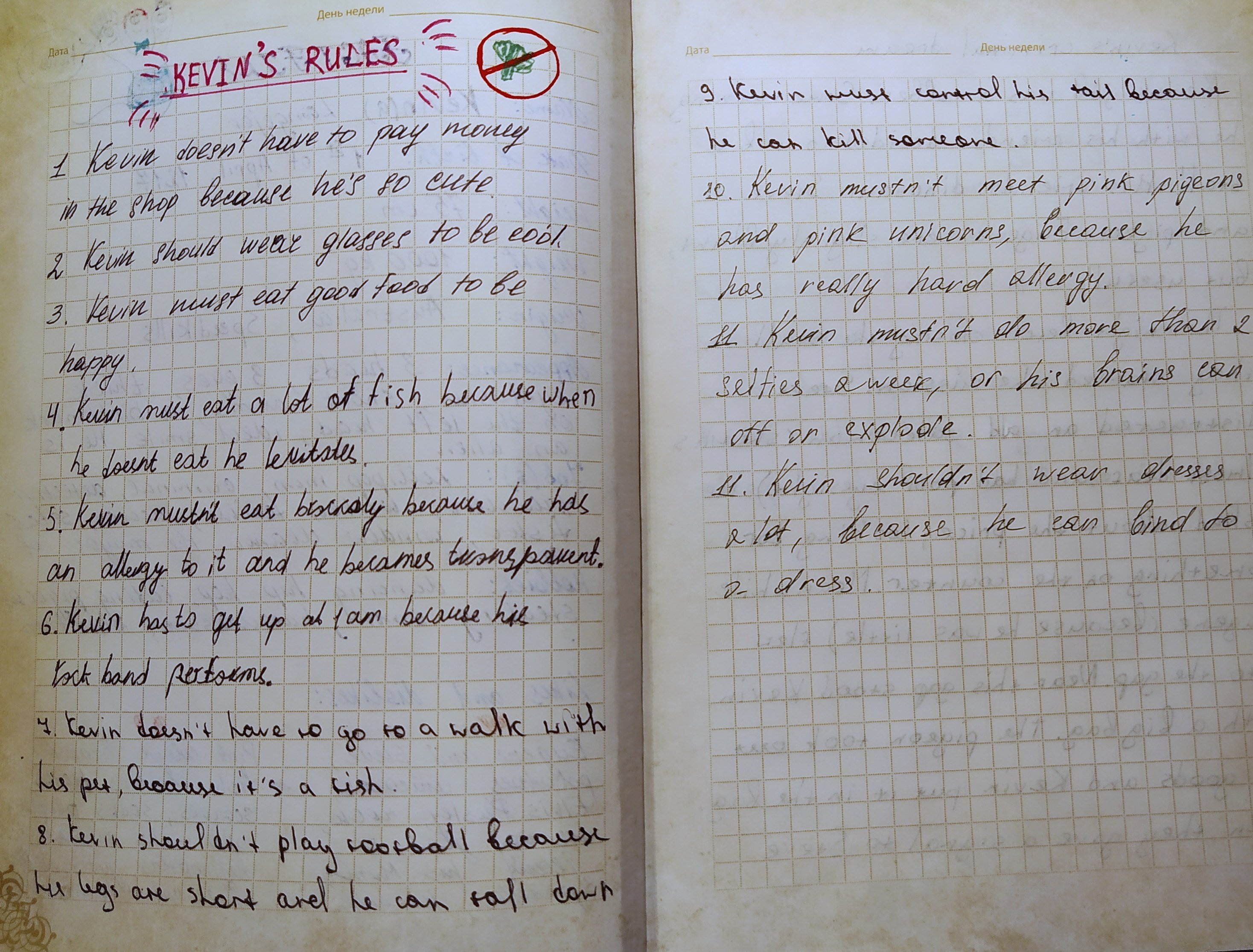
However, if they just move on adding to the comic or story, you can limit your feedback to a couple of phrases about creativity, ideas and style.
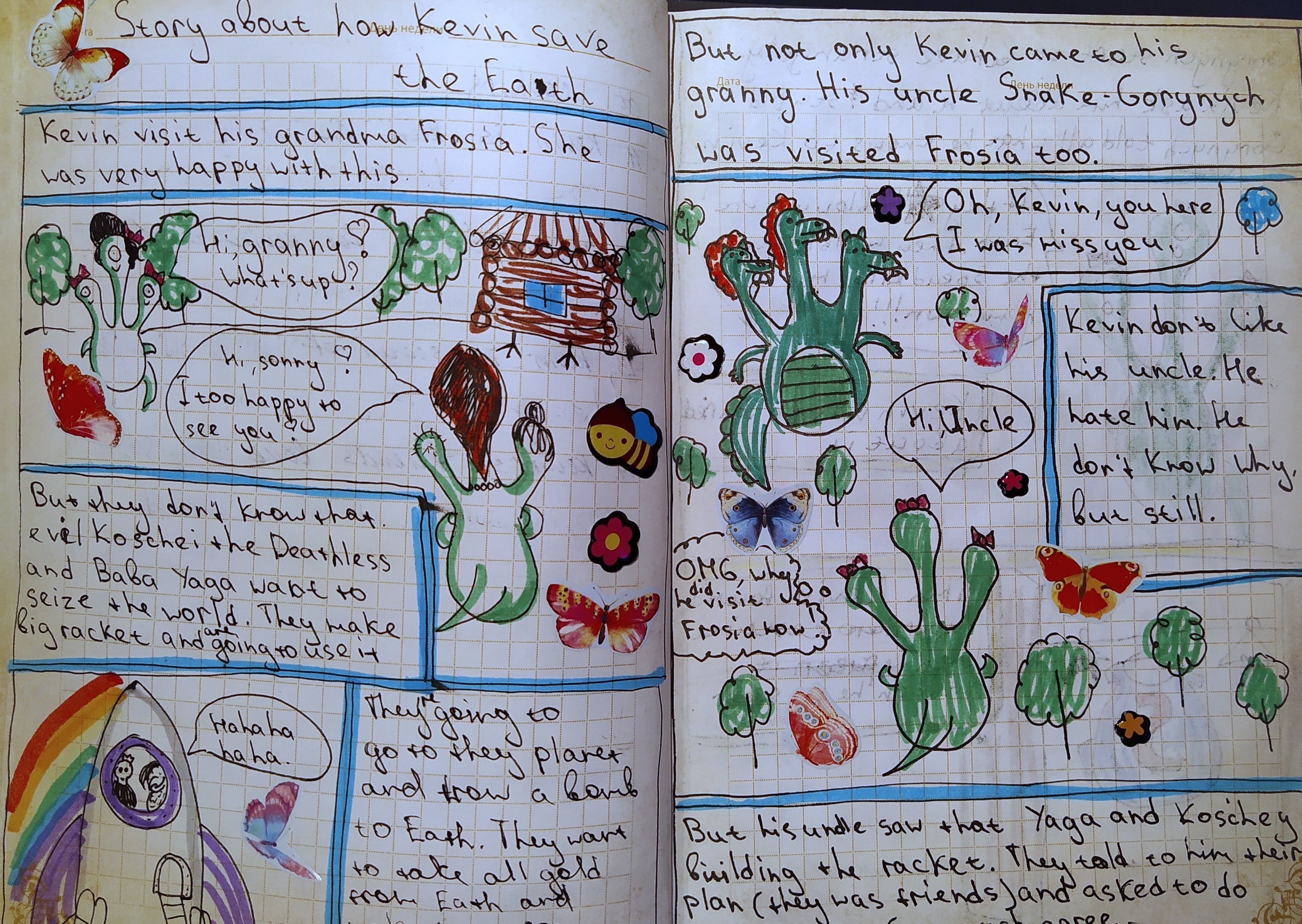
Then all you have to do is keep writing. Sometimes long-term projects die because students’ attention fades away. To prevent that, you should continue responding to stories and alter the tasks a bit. Shorter pieces of writing can be done in class or after a discussion. Also, you can invite students to draw illustrations or stickers to their texts.
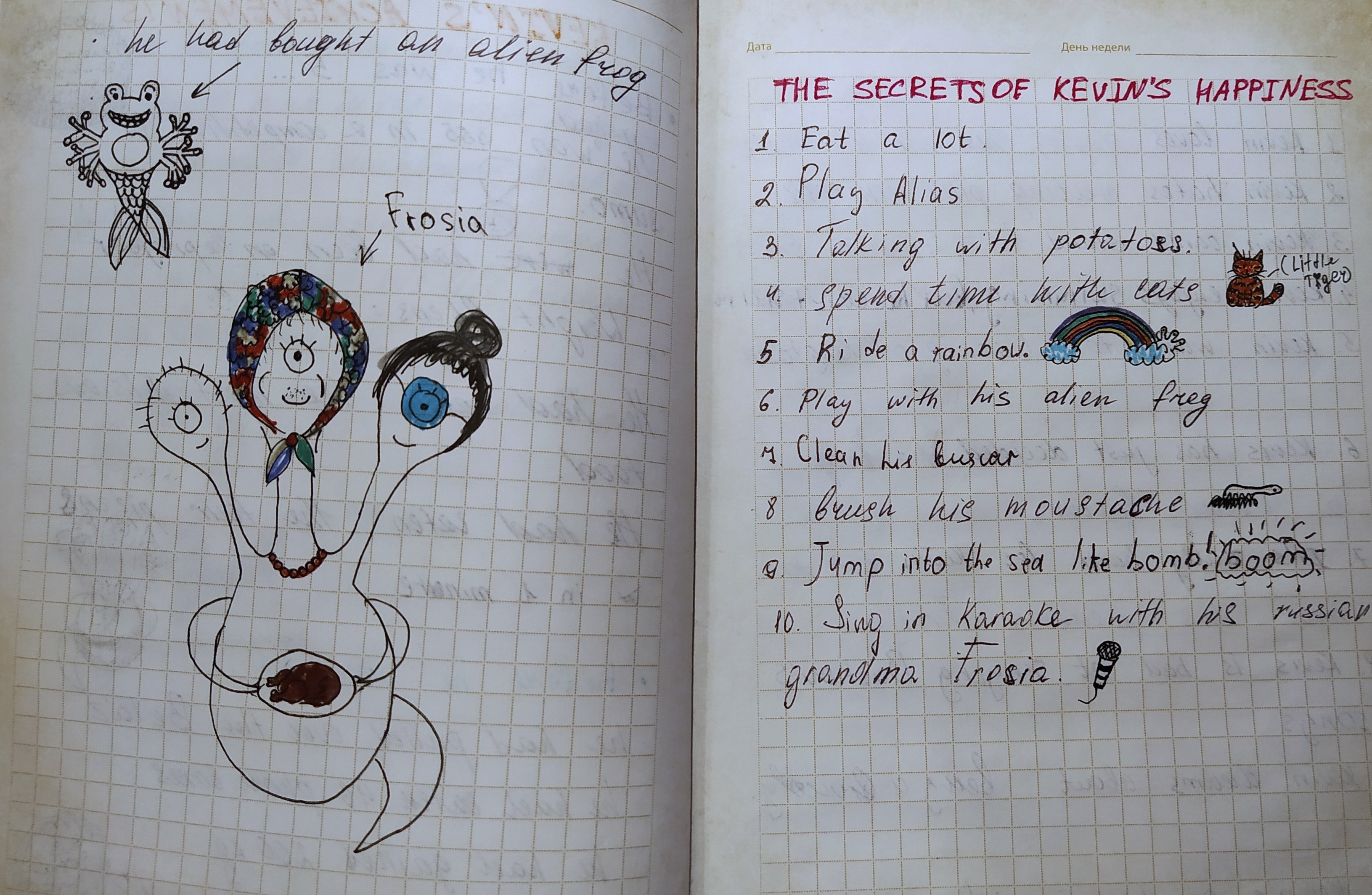
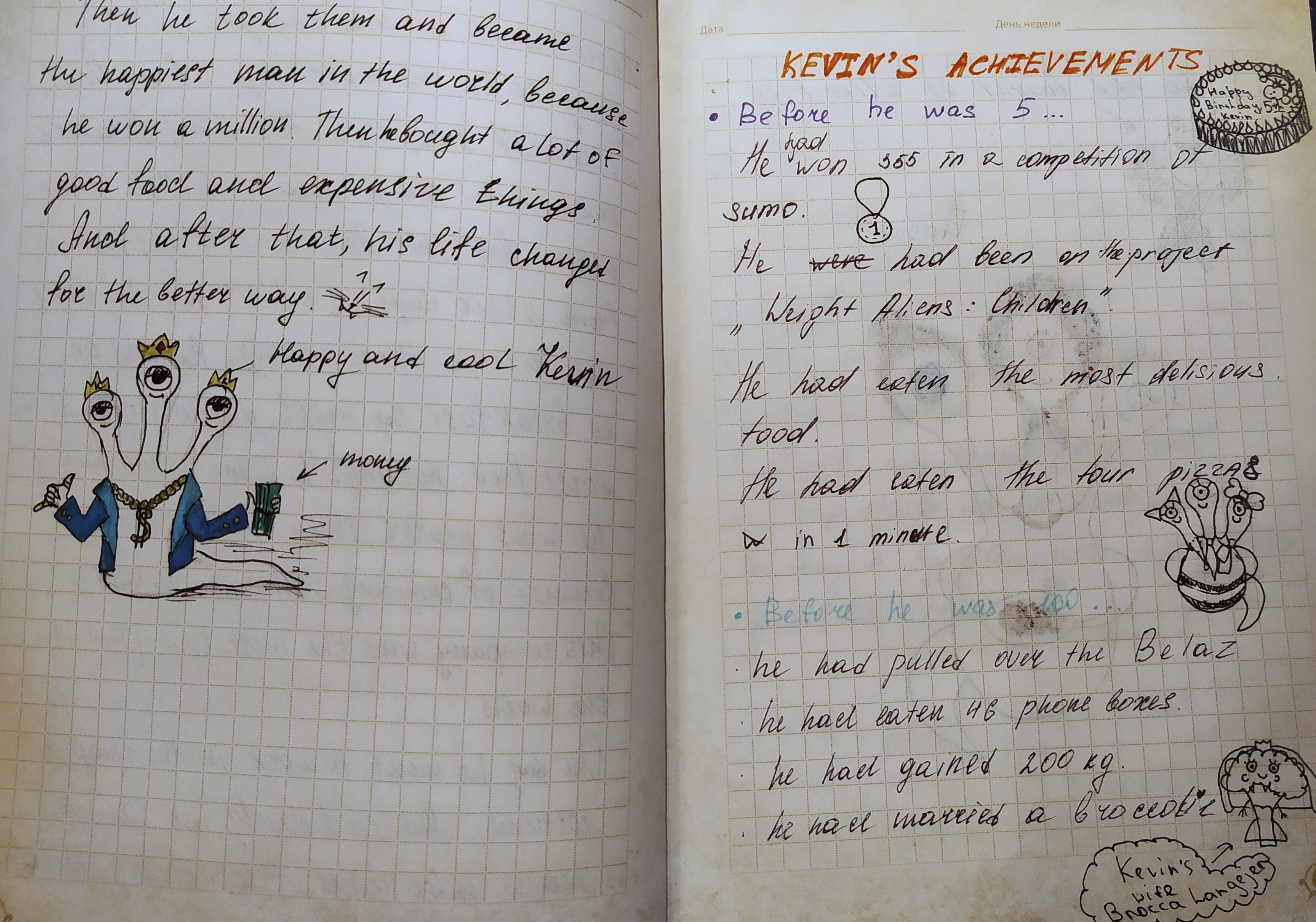
Why is it worth trying?
Teenagers benefit from journal writing in many ways. First, it’s freedom of expression which is not always allowed at schools. Second, it’s establishing better rapport between them and the teacher as this kind of writing involves commenting and collaboration. What’s more, students master their writing skills in general and get rid of any fear of the blank page.
Do you have any experience in journal writing with your students? Feel free to share!
P.S. Hope you enjoyed meeting Kevin.






 Вероника Аветисян
Вероника Аветисян 
 Маргарита Аветисян
Маргарита Аветисян 



Thank you for an interesting article! Nadezhda, what level do you think students should be to be able to write such journals? I mean «express their thoughts clearly in a written form»
Thank you for reading, Elizaveta.
As for the level, I think, you can with Elementary students. They will need more support, though, and more limits. With my Elementary students we were mainly taking the topics related to our key grammar and vocabulary. One more thing they loved doing was the so-called ‘one-word comic’. They were drawing comics and using just one word for every speech bubble of the characters.